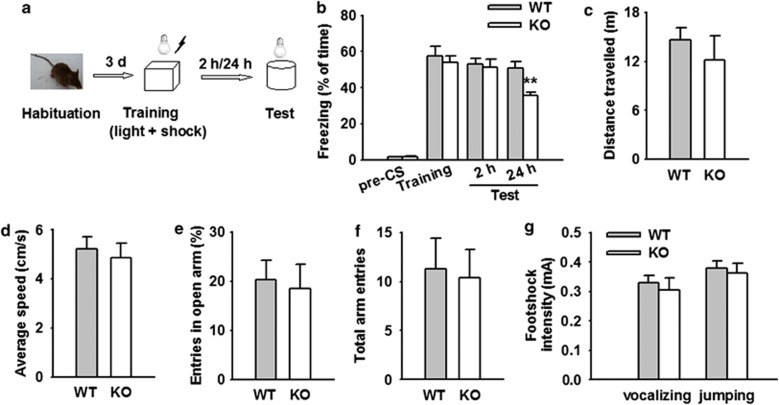Figure 2.
Aquaporin-4 (AQP4) deficiency impairs the associative fear memory of mice. (a) Experimental design of fear conditioning tasks. (b) Freezing percentage before conditioned stimulus (pre-CS), during conditioning (training) and 24 h after conditioning (test). Wild-type (WT) and knockout (KO) mice exhibited similar freezing in conditioning chamber before CS and during conditioning training. However, freezing behavior was significantly reduced in KO mice (n=8) 24 h after conditioning training compared with WT mice (n=8). The data are expressed by mean±SEM. **P<0.01 vs WT. (c) Total distance animals moved during 10 min intervals in open field. No difference was observed between KO (n=8) and WT (n=8) mice. (d) Average speed animals moved during 10 min intervals in open field. No difference was observed between KO (n=8) and WT (n=8) mice. (e) The number of animal entries to the open arm as the percentage of the total number of arm entries in the elevated plus maze. No difference was observed between KO (n=8) and WT (n=8) mice. (f) The total number of animal entries to open and closed arms in the elevated plus maze. No difference was observed between KO (n=8) and WT (n=8) mice. (g) Thresholds of shock intensities for vocalizing and jumping are shown. No difference was detected between KO (n=8) and WT (n=7) mice.

